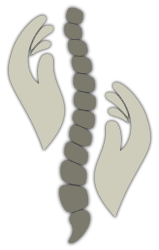Cranial Osteopathy
The fine sense of touch used in Osteopathy is a vital requirement for Cranial Osteopathy.
One of Dr AT Still’s students, Dr William Garner Sutherland, further developed osteopathy from the early to mid 1900’s to include the delicate workings of the bones and connective tissues of the skull and their effect on flow of fluid around the brain, spinal cord and into the lymphatic system. This became known as Cranial Osteopathy, or Osteopathy in the Cranial Field.
The skull is made up of a series of bones that fit together in a way that allows some movement between the bones. Although there is a lot of movement allowed between the bones of an infant skull, there is still a small amount of movement between the bones of the adult skull. This allows movement of the cerebrospinal fluid that cleanses and nourishes the brain, and also allows drainage of the ears, nose and sinuses.
Cranial Osteopathy works by releasing restrictions between the individual bones of the skull, as well as restrictions in the internal connective tissues of the skull.
There are two important aspects of these internal connective tissues, the Falx Cerebri running front to back between the two sides of the brain, and the Tentorium Cerebelli running more horizontally between the cerebrum (main brain) and cerebellum (balance centre at the back, lower region). These two tissue layers attach to every bone within the skull (not including the face) and bind them together.
Together these two connective tissue layers were named the ‘Reciprocal Tension Membrane’ by Sutherland. These layers blend down into the covering of the spinal cord which then attaches to the sacrum at base of the spine. This firm connection between the skull and base of the spine is important in many chronic issues in the body.
Cranial Osteopathy is difficult to explain briefly. Cranial Osteopaths agree that it takes about 10 years of post-graduate study and practice to really grasp it. The simplest way to summarise how Cranial Osteopathy treatment works would be this: If the bones and membranes of the skull are held in a neutral position by the Osteopath, strain patterns from birth or other traumas within the tissues of the skull and beyond can begin to unwind. This can assist in fluid flow around the brain and into the rest of the body. Working with the Reciprocal Tension Membrane and the innate forces of growth allows for the very gentle treatment of many cranial issues.
Although used a lot for infants and children, it is also used for adults in cases such as:
- Head and facial trauma
- Headaches and migraines
- TMJ / jaw issues including pain and clicking
- Cranial nerve issues
- Fatigue
- Pregnancy
For infant and children’s cranial issues see the ‘Paediatrics‘ tab.
Get in Touch
At Central Osteopathy we treat all the tissues involved in a problem including muscles, joints and connective tissues so that the problem resolves quickly.

